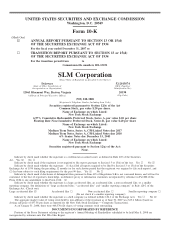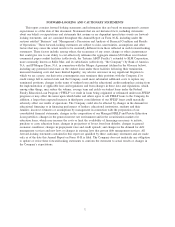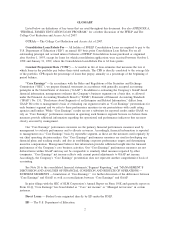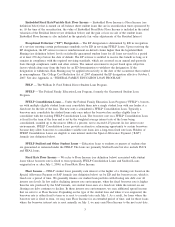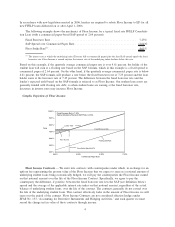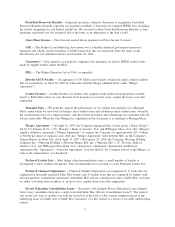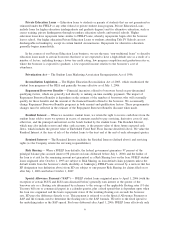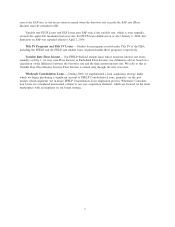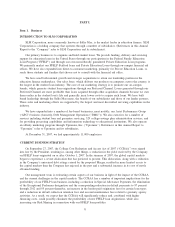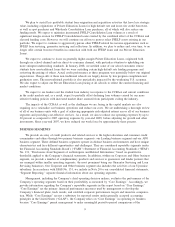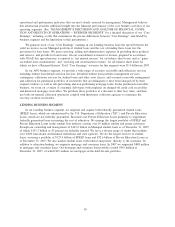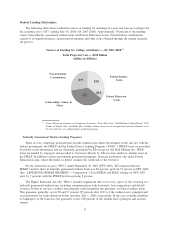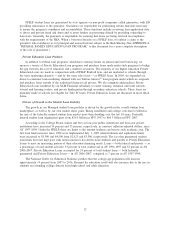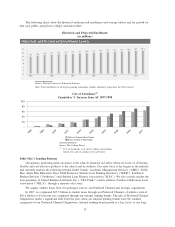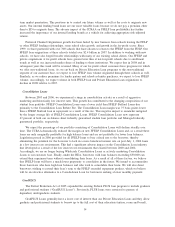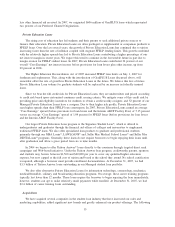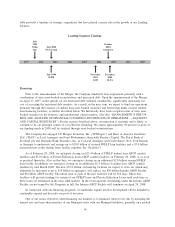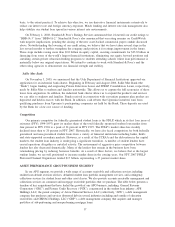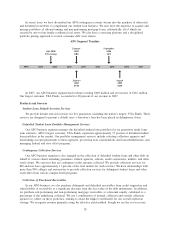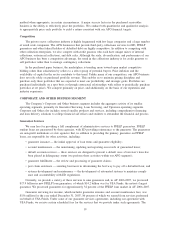Sallie Mae 2007 Annual Report Download - page 10
Download and view the complete annual report
Please find page 10 of the 2007 Sallie Mae annual report below. You can navigate through the pages in the report by either clicking on the pages listed below, or by using the keyword search tool below to find specific information within the annual report.We plan to curtail less profitable student loan origination and acquisition activities that have less strategic
value, including originations of Private Education Loans for high default rate and lower-tier credit borrowers,
as well as spot purchases and Wholesale Consolidation Loan purchases, all of which will also reduce our
funding needs. We expect to minimize incremental FFELP Consolidation Loan volume as a result of
significant margin erosion for FFELP Consolidation Loans created by the combined effect of the CCRAA and
elevated funding costs. However, we will continue our efforts to protect select FFELP assets existing in our
portfolio. We expect to continue to aggressively pursue other FFELP-related fee income opportunities such as
FFELP loan servicing, guarantor servicing and collections. In addition, we plan to reduce and, over time, to no
longer offer certain borrower benefits in connection with both our FFELP loans and our Private Education
Loans.
We expect to continue to focus on generally higher-margin Private Education Loans, originated both
through our school channel and our direct-to-consumer channel, with particular attention to upholding our
more stringent underwriting standards. In January 2008, we notified some of our school customers whose
students have non-traditional loans that we were curtailing certain high default rate lending programs and
reviewing the pricing of others. Actual credit performance at these programs was materially below our original
expectations. Charge-offs at these non-traditional schools are largely driven by low program completion and
graduation rates. The non-traditional portfolio is also particularly impacted by the weakening U.S. economy.
We also expect to adjust our Private Education Loan pricing at all schools to reflect the current financing and
market conditions.
We expect to see lenders exit the student loan industry in response to the CCRAA and current conditions
in the credit markets and, as a result, expect to partially offset declining loan volumes caused by our more
selective lending policies with increased market share assumed from participants exiting the industry.
The impacts of the CCRAA as well as the challenges we are facing in the capital markets are also
requiring us to rationalize our business operations and reduce our costs. We are undertaking a thorough review
of all of our business units with a goal of achieving appropriate risk-adjusted returns across all of our business
segments and providing cost-effective services. As a result, we aim to reduce our operating expenses by up to
20 percent as compared to 2007 operating expenses by year-end 2009, before adjusting for growth and other
investments. Since year-end 2007, we have reduced our work force by approximately three percent.
BUSINESS SEGMENTS
We provide an array of credit products and related services to the higher education and consumer credit
communities and others through two primary business segments: our Lending business segment and our APG
business segment. These defined business segments operate in distinct business environments and have unique
characteristics and face different opportunities and challenges. They are considered reportable segments under
the Financial Accounting Standards Board’s (“FASB”) Statement of Financial Accounting Standards (“SFAS”)
No. 131, “Disclosures about Segments of an Enterprise and Related Information,” based on quantitative
thresholds applied to the Company’s financial statements. In addition, within our Corporate and Other business
segment, we provide a number of complementary products and services to guarantors and lender partners that
are managed within smaller operating segments, the most prominent being our Guarantor Servicing and Loan
Servicing businesses. Our Corporate and Other business segment also includes the activities of our Upromise
subsidiary. In accordance with SFAS No. 131, we include in Note 20 to our consolidated financial statements,
“Segment Reporting,” separate financial information about our operating segments.
Management, including the Company’s chief operating decision makers, evaluates the performance of the
Company’s operating segments based on their profitability as measured by “Core Earnings.” Accordingly, we
provide information regarding the Company’s reportable segments in this report based on “Core Earnings.”
“Core Earnings” are the primary financial performance measures used by management to develop the
Company’s financial plans, track results, and establish corporate performance targets and incentive compensa-
tion. While “Core Earnings” are not a substitute for reported results under generally accepted accounting
principles in the United States (“GAAP”), the Company relies on “Core Earnings” in operating its business
because “Core Earnings” permit management to make meaningful period-to-period comparisons of the
9

